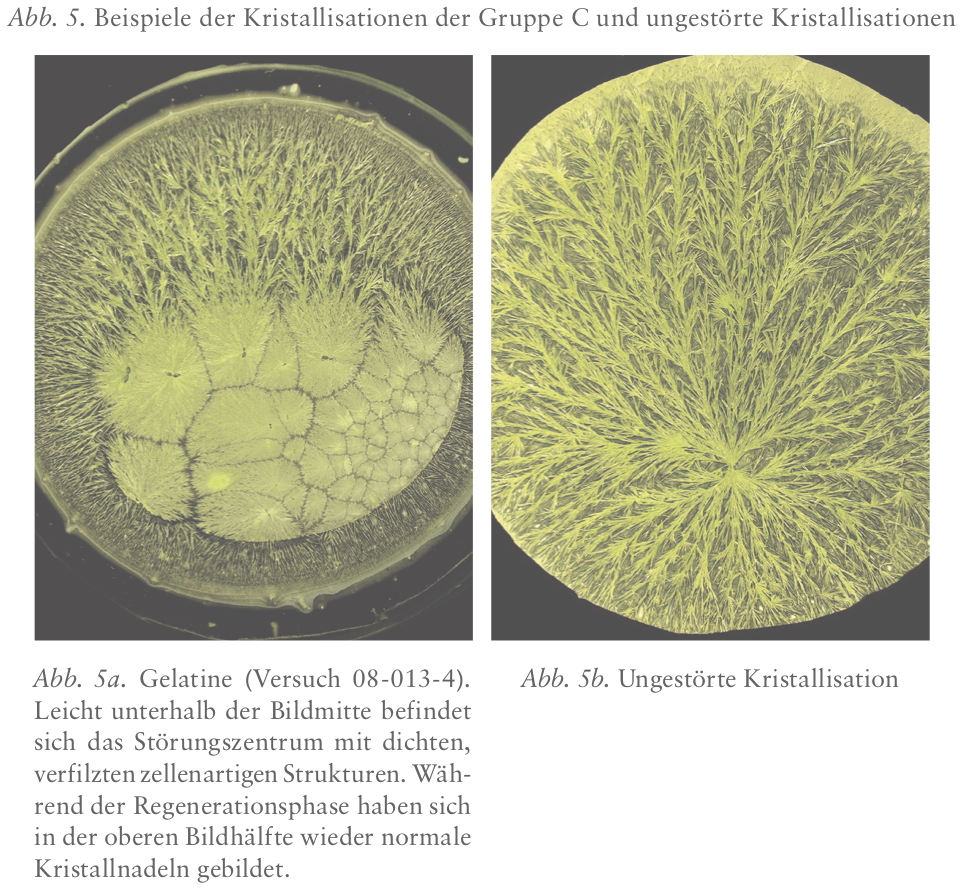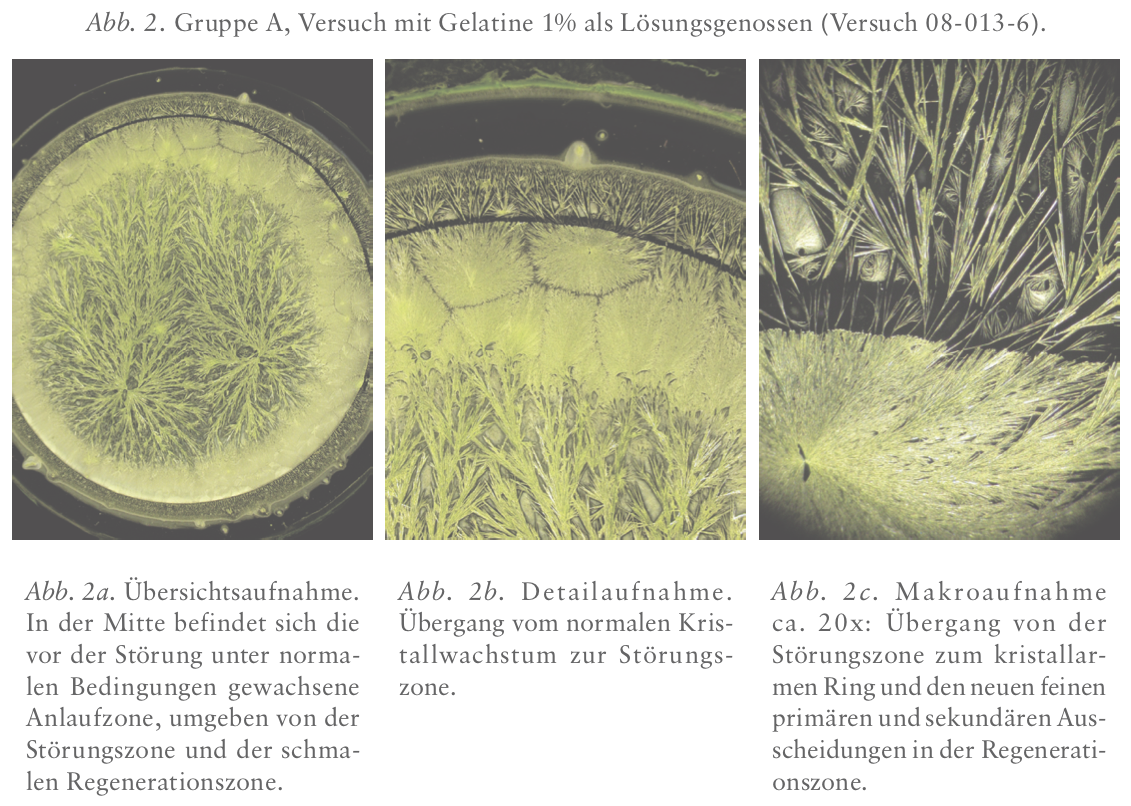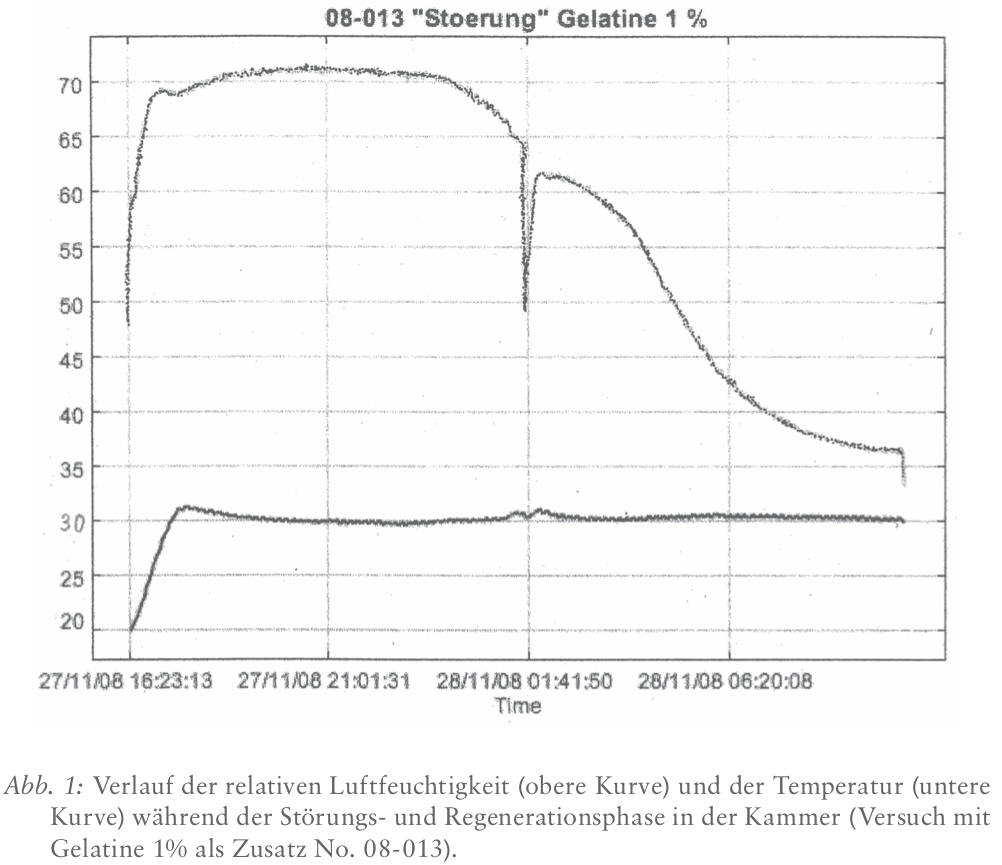Störungs- und Regenerationserscheinungen bei der Biokristallisation
Export Article Citation as
- Plain text
- BibTeX
- RIS format
- Download price : € 6.00
Abstract:
If the crystallisation process of biocrystallisation (copper chloride crystallisation) is perturbed by an external influence (e.g. a large drop in relative humidity through brief opening of the chamber door), a local limited perturbation zone arises. This is characterised by a rapid growth of the crystal front or through the appearance of multiple centres. But if the remaining solution is allowed to crystallise out in the normal conditions of humidity, then a crystal picture forms again which is similar to that of an unperturbed crystallisation. Experiments with various additives (dinkel- wheat flour, gelatine, milk and mistletoe extract) show that the sensitivity of the solution to the outer perturbation probably largely depends on the kind of additive, but the underlying regeneration phenomena which lead to a ‘reunification’ of the crystal pictures are the same. This paper attempts to describe these phenomena both on the basis of physical crystallography, and through a holistic method of observation.






